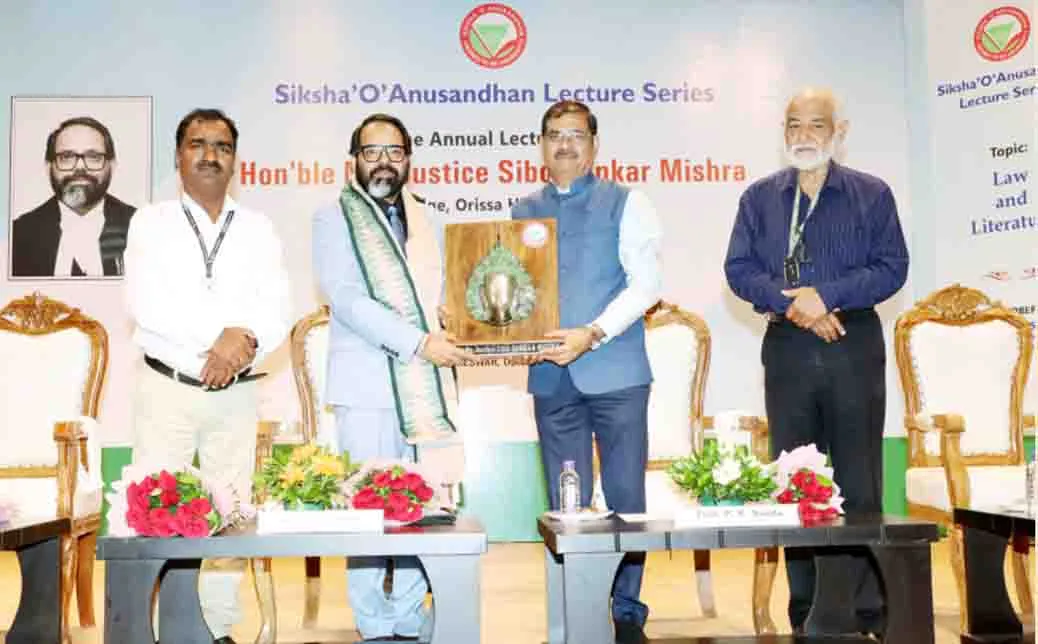

Bhubaneswar, Oct. 25: Law and literature are two distinct and different disciplines but there is an inseparable linkage between the two, Justice Sibo Sankar Mishra, Judge of the Orissa High Court said on Saturday.
“Law is an instrument which regulates human conduct and behavior while literature provides expression to human behavior which is a representation of law,” Justice Mishra said while speaking to students and faculty members of Siksha ‘O’ Anusandhan Deemed to be University here.
Justice Mishra was addressing the gathering as part of the SOA Lecture Series.
Pointing out that literature was often represented through writings, storytelling, painting and theatre, he said law could be found in literature and vice versa.
Citing the example of eminent novelist Fakir Mohan Senapati’s magnum opus, ‘Chha Mana Athaguntha’, Justice Mishra said the writer had exposed before the society how the colonial land laws were being misused during that time.
“Law was represented through Senapati’s story,” he said.
Justice Mishra also referred to novelist Pratibha Ray’s famous work ‘Yajnaseni’ saying the renowned writer had focused on how women were suppressed in the society under the yoke of patriarchal laws.
Shakespeare’s ‘Merchants of Venice’ also spoke about injustice and prejudices in society while the mythology ‘Mahabharat’ explained the battle between ‘dharma’ and ‘adharma’, he said.
Prof. Pradipta Kumar Nanda, Vice-Chancellor of SOA, presided over the program while Prof. Prabir Patnaik, Senior Professor in the SOA National Institute of Law (SNIL), introduced the speaker. Prof. Jyoti Ranjan Das, Dean (Students’ Welfare) conducted the program.
Referring to the ‘Ramayana’, Justice Mishra said the kidnapping of Sita pointed to the behavioral disorder of a person which was illegal. He was asked to return her but refused and was punished through execution.
Justice Mishra also cited the example of a series of old Hindi movies including ‘Shree 420’, ‘Awara’ and ‘Kanoon’ saying the law was sought to be taught to the society through cinematic representation through these films.
Recalling the story of the famous film ‘Andha Kanoon’, he said, the movie made it clear that no person could be punished twice for the same offence. Similarly, the nuances and technicalities of law were the focus of the film ‘No One Killed Jessica’, he added.
The famous dialogue ‘tarikh pe tarikh’ in the hindi film ‘Damini’ was a reflection of the legal system pointing to delayed justice, Justice Mishra said.